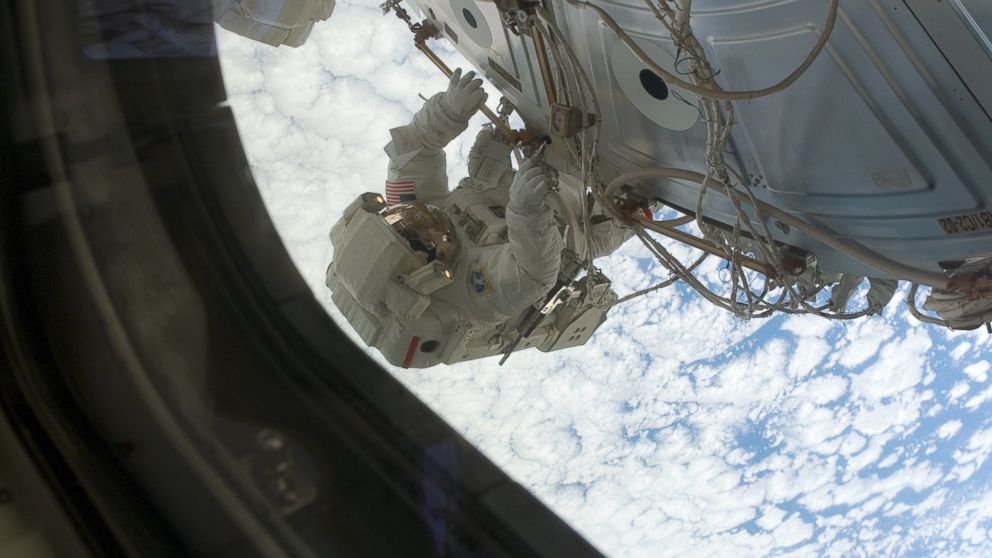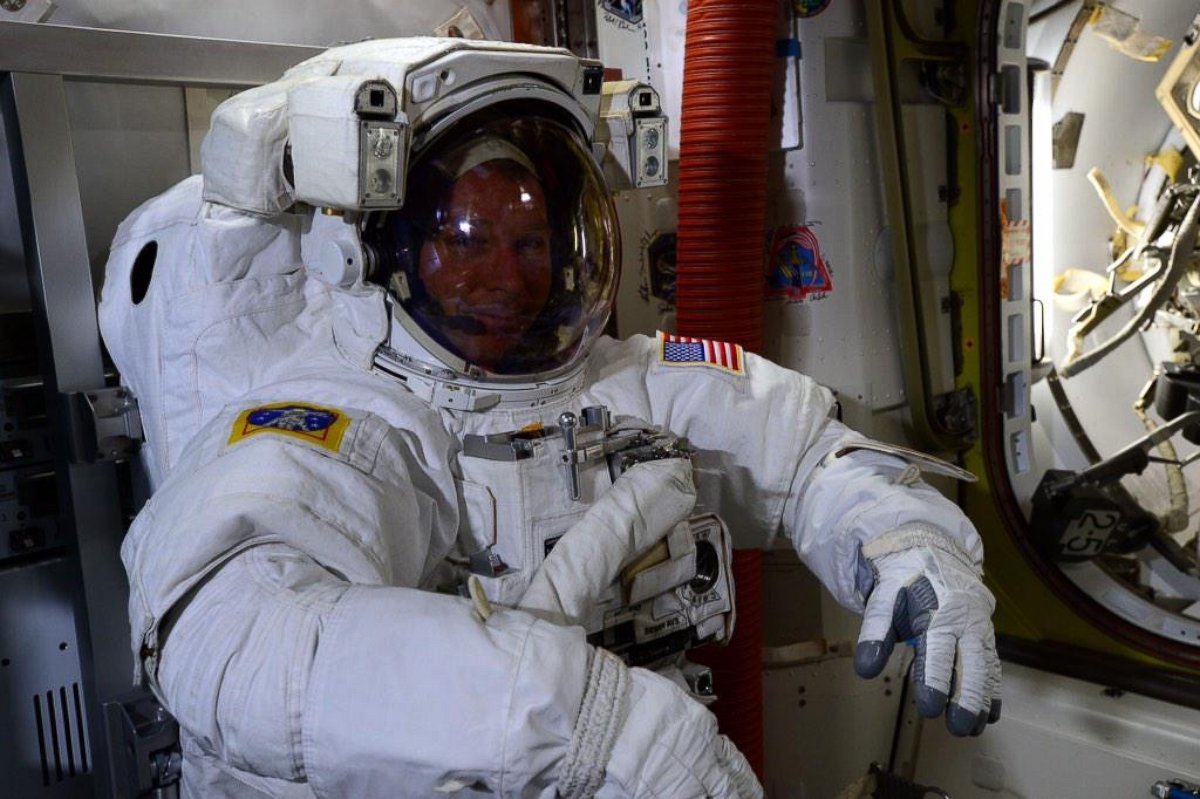Space Walk: How NASA Prepares for the Worst
The safety precautions astronauts will take when they step outside the ISS.

— -- When American astronauts Barry Wilmore and Terry Virts begin a space walk on Saturday, they'll have several safety mechanisms in place, including tethers and an emergency jet pack that will keep them from turning into a Hollywood plot line.
The duo are set to work on new docking ports for future spacecraft that will arrive at the station. Saturday's space walk is one of three that are scheduled to complete assembly work outside of the station.
It will be the first space walk of Virts' career when he and Wilmore embark on their six-and-a-half hour extravehicular activity, or EVA. It will be Wilmore's second space walk.
The duo will put on their space suits hours before their Saturday morning EVA so they have time to breathe in pure oxygen and get rid of any nitrogen in their bodies, which could otherwise cause gas bubbles when the astronauts are outside the station, leading to joint pain and other potentially dangerous conditions. That's because the pressure inside the space suit is substantially lower than normal cabin pressure on the space station -- about 10 pounds per square inch vs. 14 psi.
Clayton Anderson, a retired NASA astronaut who completed six space walks totaling 38 hours and 28 minutes, told ABC News that the first moment can be a bit daunting -- especially when it's an astronaut's first time.
Virts might be thinking, "Oh Lord, don't let me make a mistake," Anderson said. "In jest, he will have some of that in his head. It is natural but we are so well trained that eventually his training kicks in pretty quickly and he does what he is trained to do. In a short time he will relax and say, 'Hey, this is pretty cool.'"
When the pair are on the space walk, they'll both be hooked to 85-foot safety tethers, along with a local tether they can hook up whenever they move to a new spot, Anderson said.
They'll also have individual jet packs with a limited amount of fuel that they can use in the unlikely event their tethers come unharnessed from the space station.
"They have the ability with this jet pack to activate it, pull out a hand controller, turn it on and fly back to the space station," Anderson said. "We practice that in a virtual reality environment, but no astronaut has ever had to use it [in an emergency]."

Italian astronaut Luca Parmitano nearly drowned during his July 16, 2013, space walk because information about a previous water leak didn't make its way up the chain of command, according to a NASA report.
NASA will also be closely monitoring the vital signs of both astronauts to make sure they stay healthy during their scheduled six and a half hours outside of the station. They have carbon dioxide monitors and will periodically check their gloves to make sure there are no punctures.
Anderson, who is releasing "The Ordinary Spaceman" on June 1, a memoir of his career as an astronaut, said aside from the safety equipment one of the most important things both astronauts can do is to continually have conversations with mission control and to be honest with them about how they're feeling.
"They know what they need to do and that is part of the safety training," Anderson said. "Being calm and relaxed is so important."




